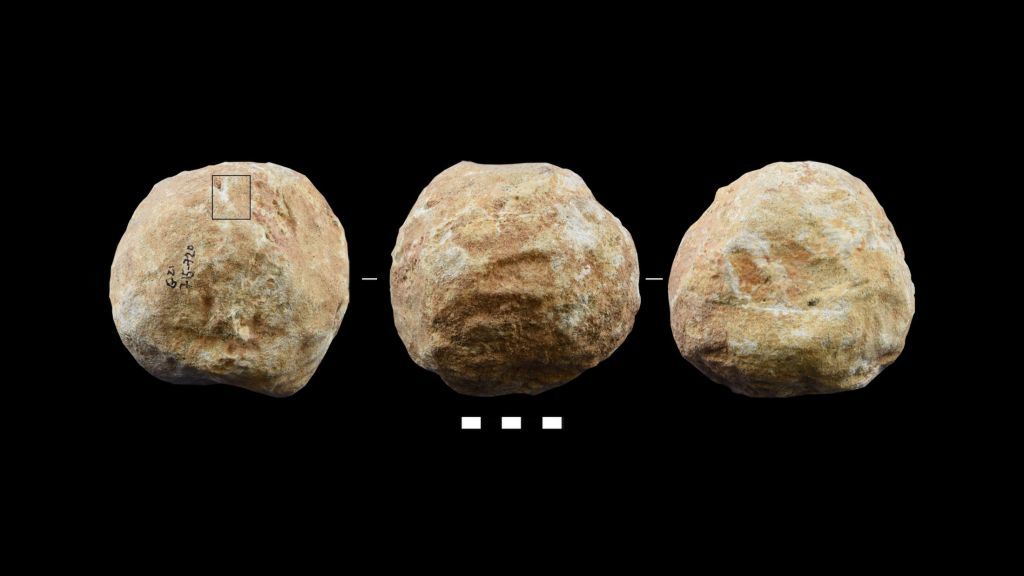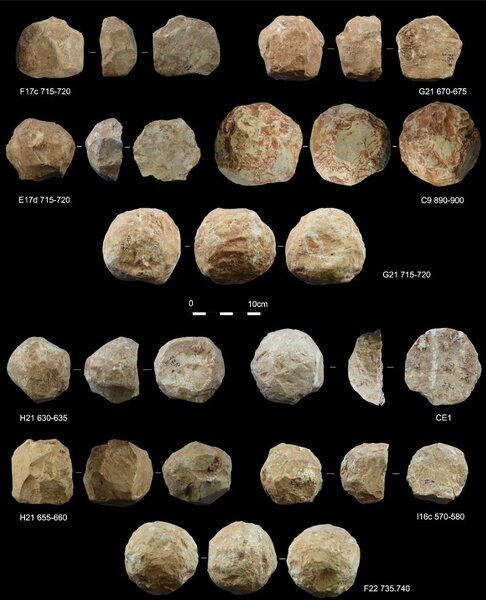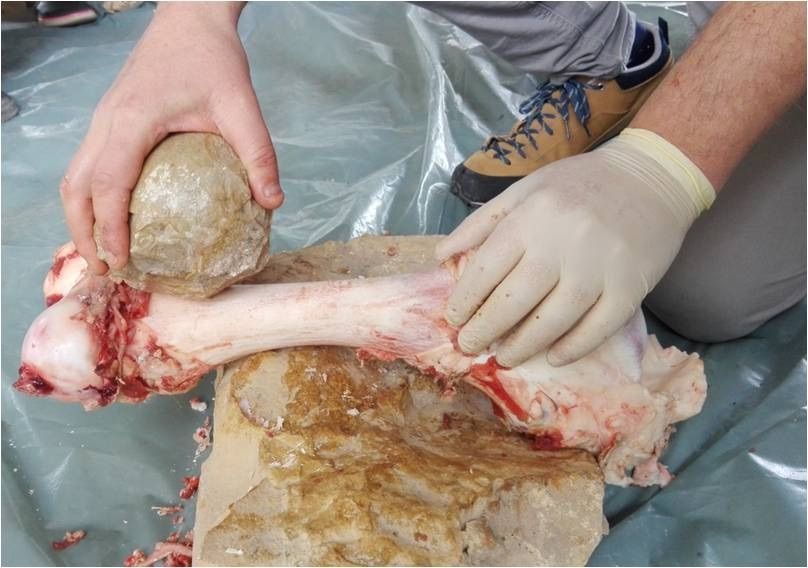Create a free profile to get unlimited access to exclusive videos, sweepstakes, and more!
Prehistoric juggling balls? Jumbo marbles? Here's what these ancient stones were really used for

Paleolithic tribes of humans didn't have the most exciting diets or fancy kitchen accessories to whip up culinary masterpieces. But what they did have in abundance was rocks, and lots of them!
Some of the more mysterious archaeological finds discovered in ancient caves over the decades are shaped stone balls which started to be crafted nearly two million years ago. These carved curiosities have been excavated at numerous historical sites in Africa and Asia but their intended usage has only been speculated on until now.
In a revealing new research paper published April 9 in the online scientific journal PLOS ONE, Dr. Ella Assaf of Tel Aviv University and her team of scholars has explained that the regional groups of hunter-gatherers around the Qesem Cave in the Samaria Hills used these specialized stone utensils to crack open large animal bones to extract the nutrient-rich marrow. All total, her group found 30 spherical stone artifacts made of carbonate rocks like limestone or dolomite.
Those primitive communities that resided in Israel between 400,000 and 300,000 years ago were resourceful enough to understand the importance of essential tools to make the most of their paleo meals. This specific period represents a time of instrumental change in early human life, when the use of fire began to propogate and many technological shifts occurred. The Qesem Cave demonstrates clues to these societal adaptations, with animal bones of fallow deer, birds, wild horses, and tortoises discovered burned and surrounded by simple utensils including knives.
Collaborating with the DANTE — Diet and Ancient Technology Laboratory at Sapienza University of Rome, and the organization's Emanuela Cristiani, who co-authored the paper, Assaf and her crew inspected the stones and found rare microscopic leftovers and telltale marks on their rough surfaces.
"I excavated a certain area in the cave where many of the stone balls appeared and as of today we found 30 balls," Assaf tells SYFY WIRE. "These were found together with other stone tools and animal bones. Over the years we have noticed some extraordinary things that have to do with them. They are very different from other tools found in the cave, and we decided to explore them thoroughly in a multi-disciplinary approach (we're a group of eleven researchers).
"Professor Emanuela Cristiani and Dr. Isabella Caricola from DANTE laboratory examined the stone balls microscopically and discovered use wear signs and organic residues related to bone marrow on ten items," she notes. "Such kind of functional modifications are rarely preserved on such ancient artifacts. It means that the balls were used by the cave inhabitants to break animal bones and extract the nutritional marrow. Our study provided evidence, for the first time, regarding the function of these enigmatic shaped stone balls that were produced by humans for almost two million years."
Their study also revealed that the Qesem people specifically selected these ancient, ready-made tools that somebody hand-knapped at an earlier time, probably due to their specific round morphology.
"The people who lived in Qesem Cave some 300,000 years ago had extensive knowledge and high skill," Assaf adds. "They were able to manufacture tools using innovative technologies, and had a very vast toolkit. Part of this knowledge included selecting the right tool and using it adequately. In this case, they made an effort to collect ancient tools (knapped by their ancestors), since these served their specific needs of breaking bone and extracting marrow – highly important element in early human diet."
















